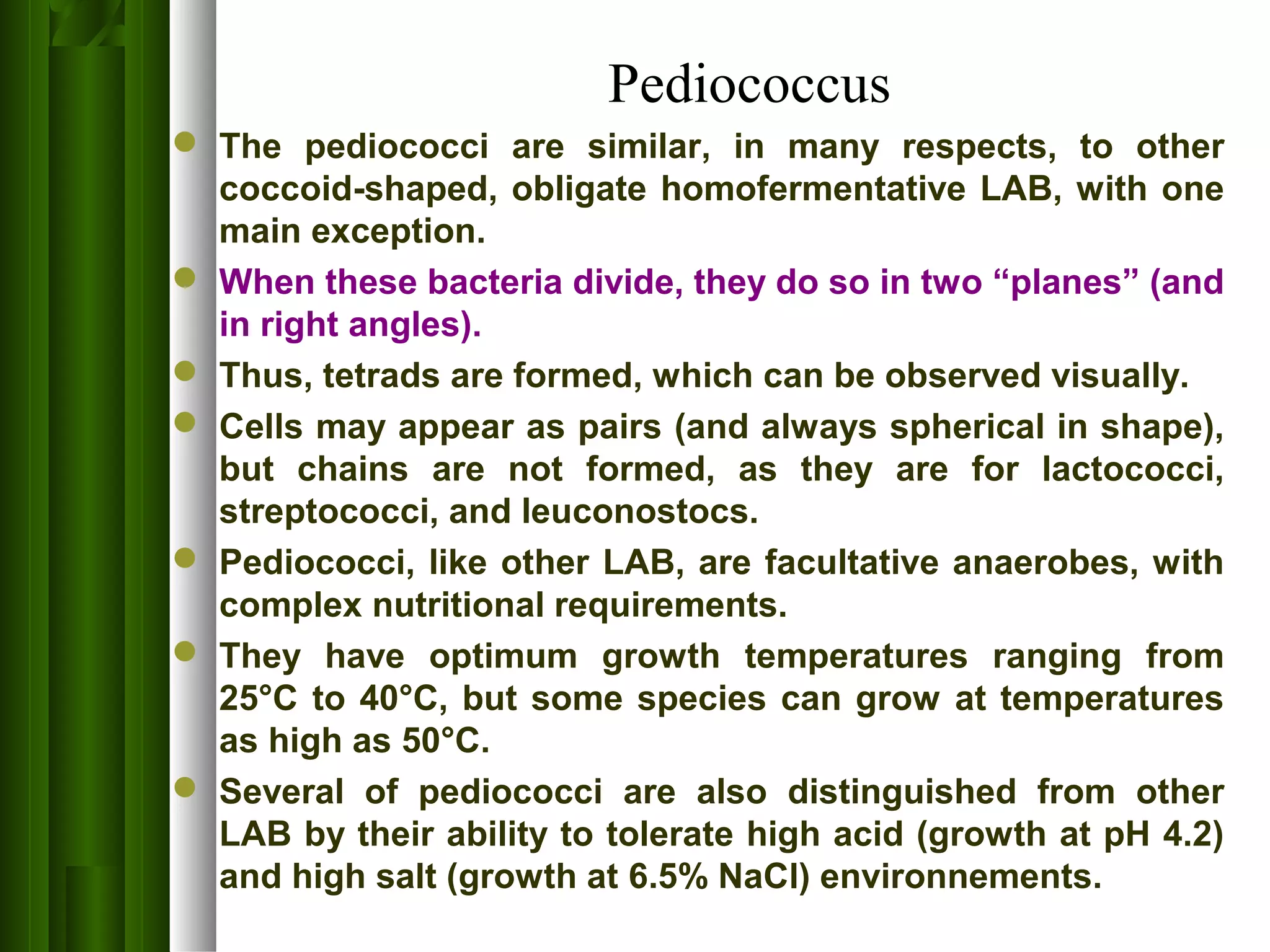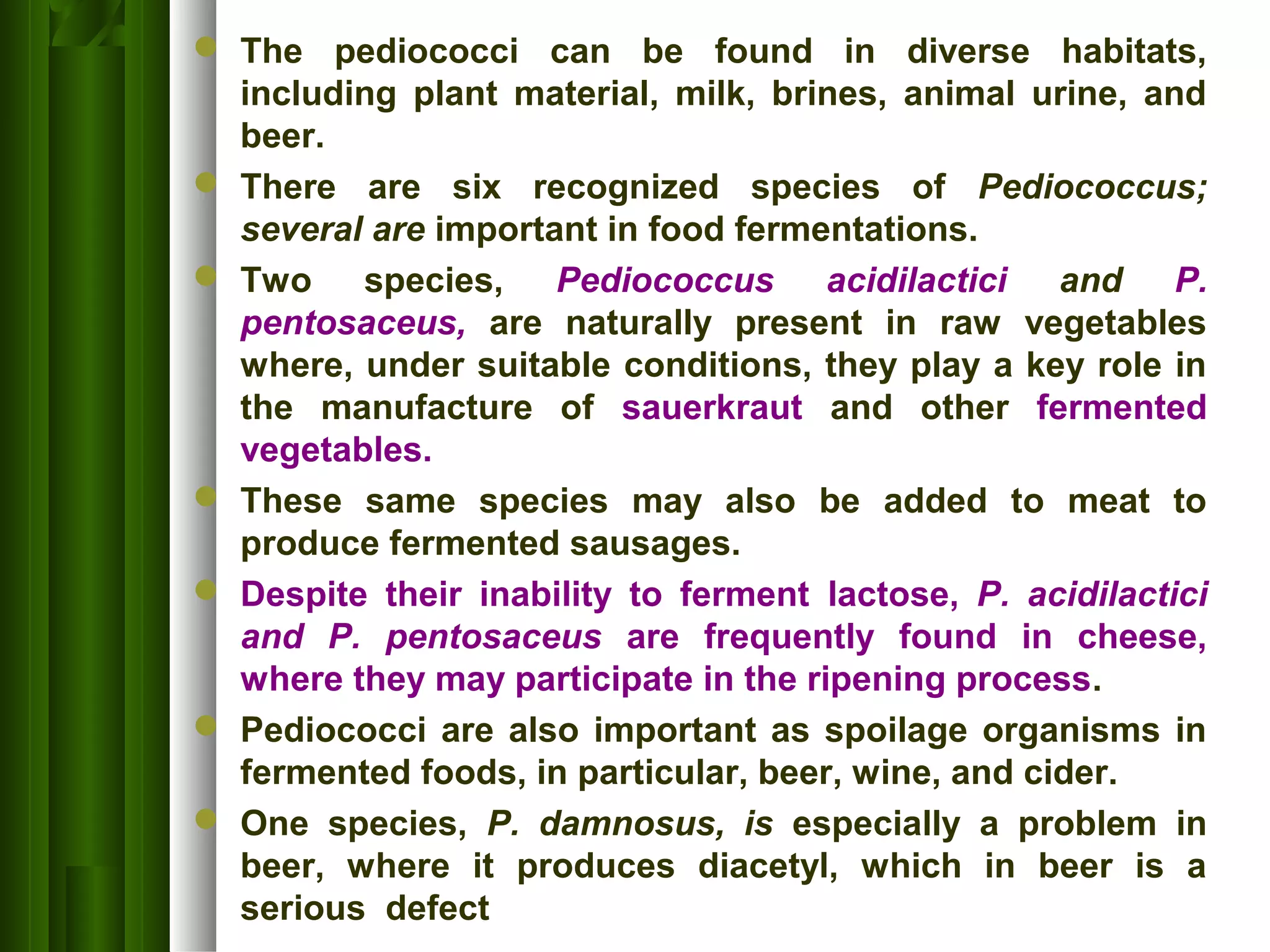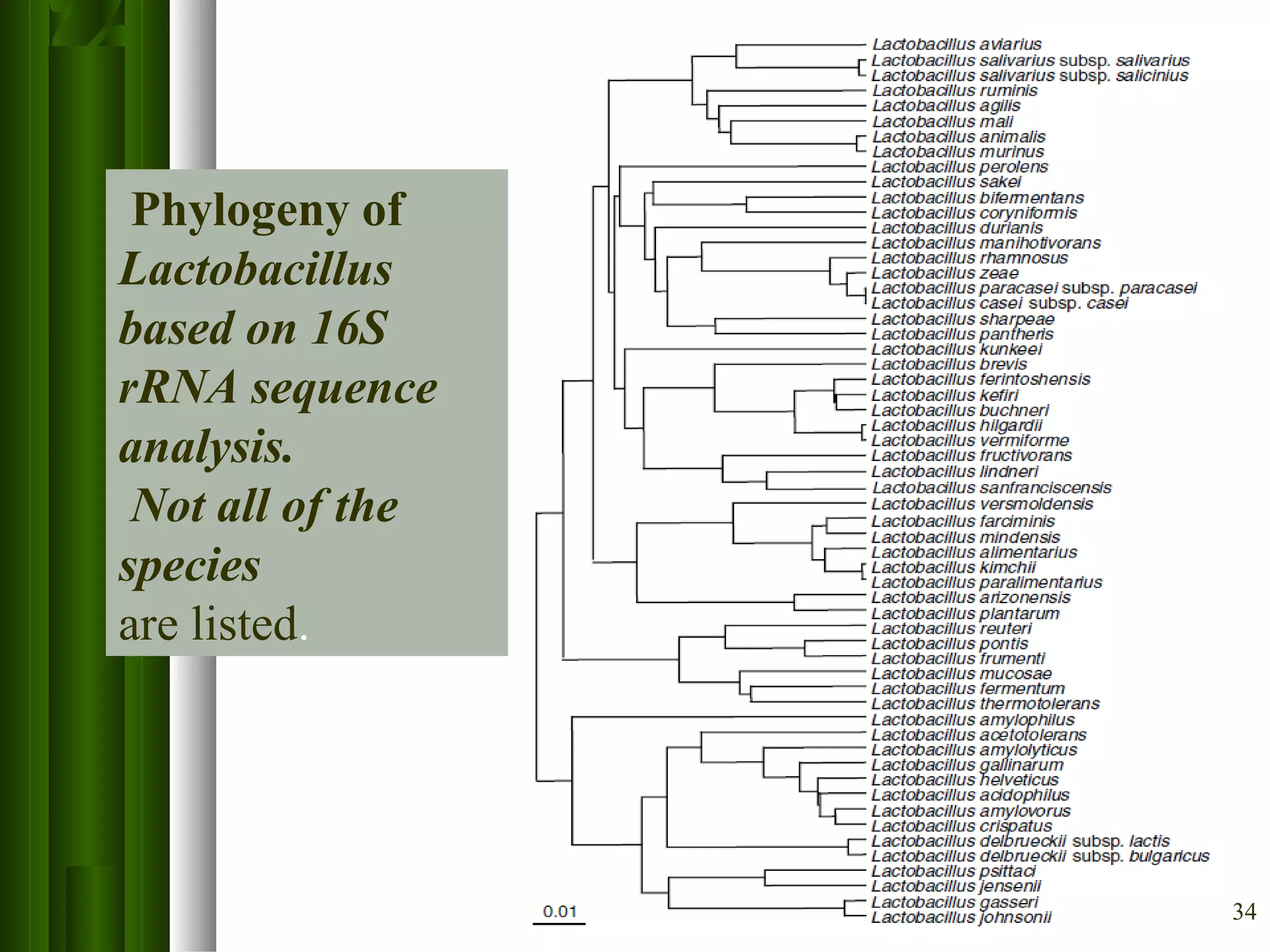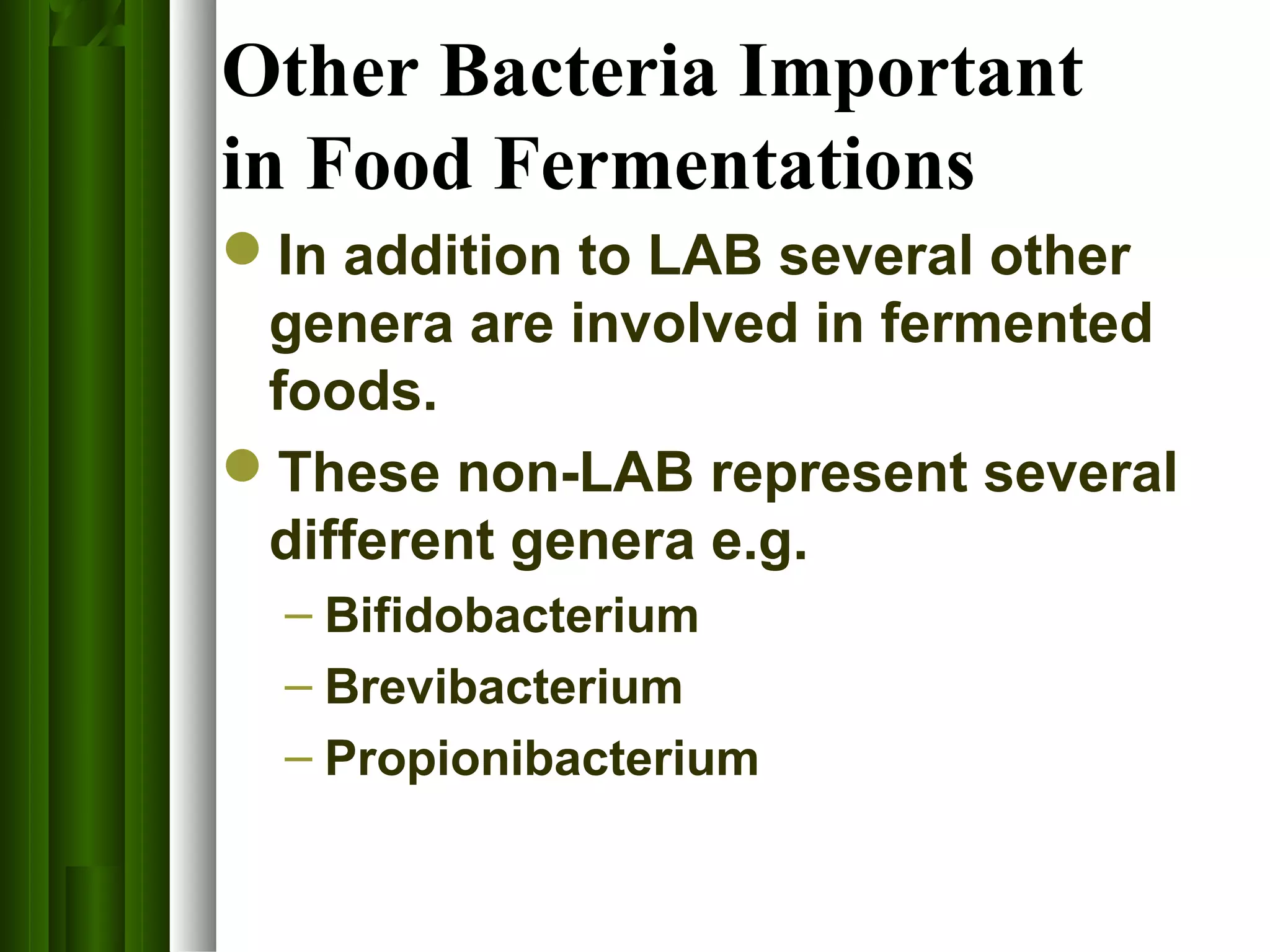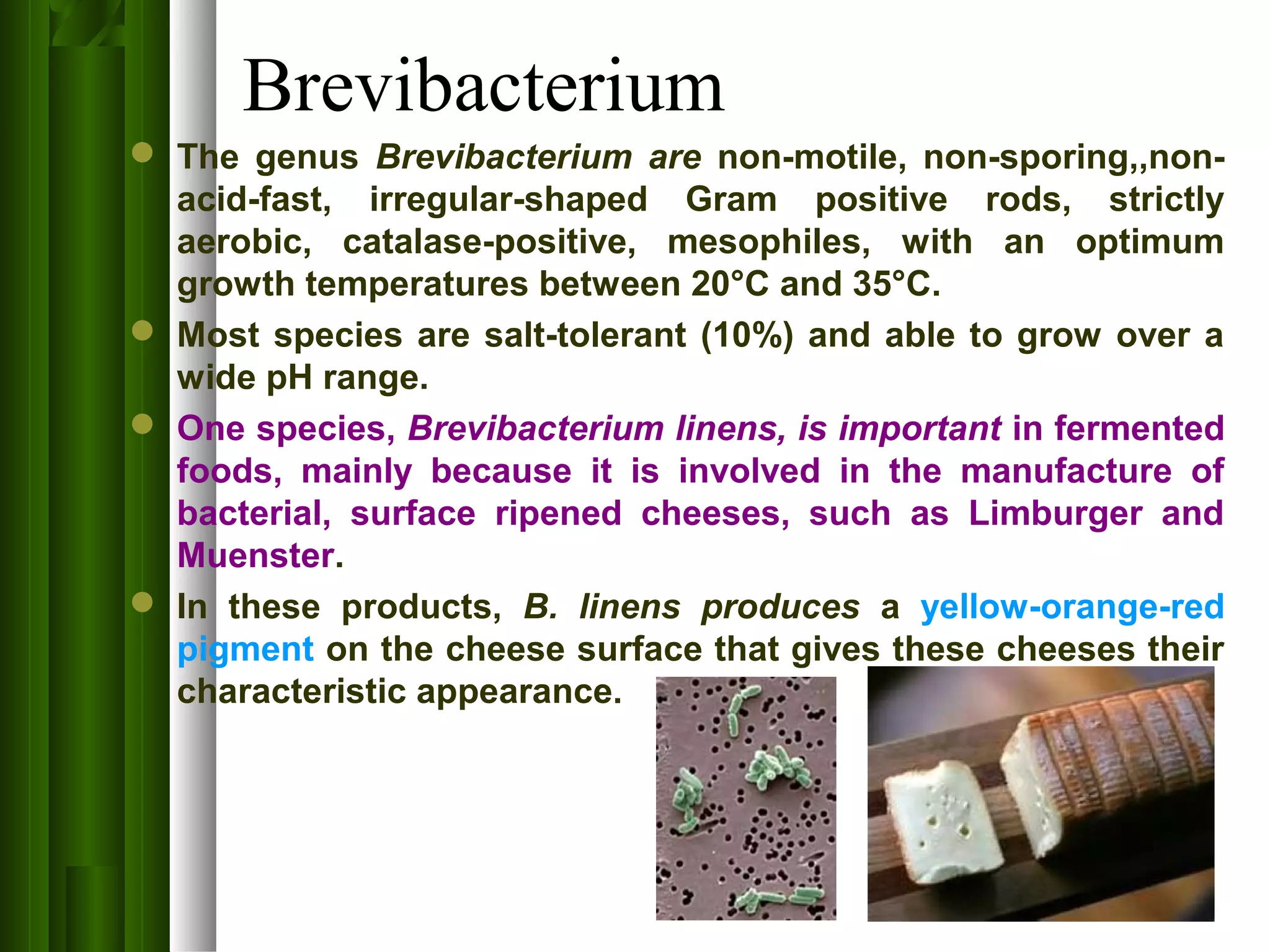This document discusses various lactic acid bacteria used in food fermentations. It describes the classification and characteristics of important genera used as starter cultures including Lactococcus, Streptococcus, Leuconostoc, Pediococcus, and Lactobacillus. It also provides background on the taxonomy and phylogeny of these microorganisms based on 16S rRNA sequencing and their roles in important fermented foods like cheese, yogurt, sausages and vegetables.
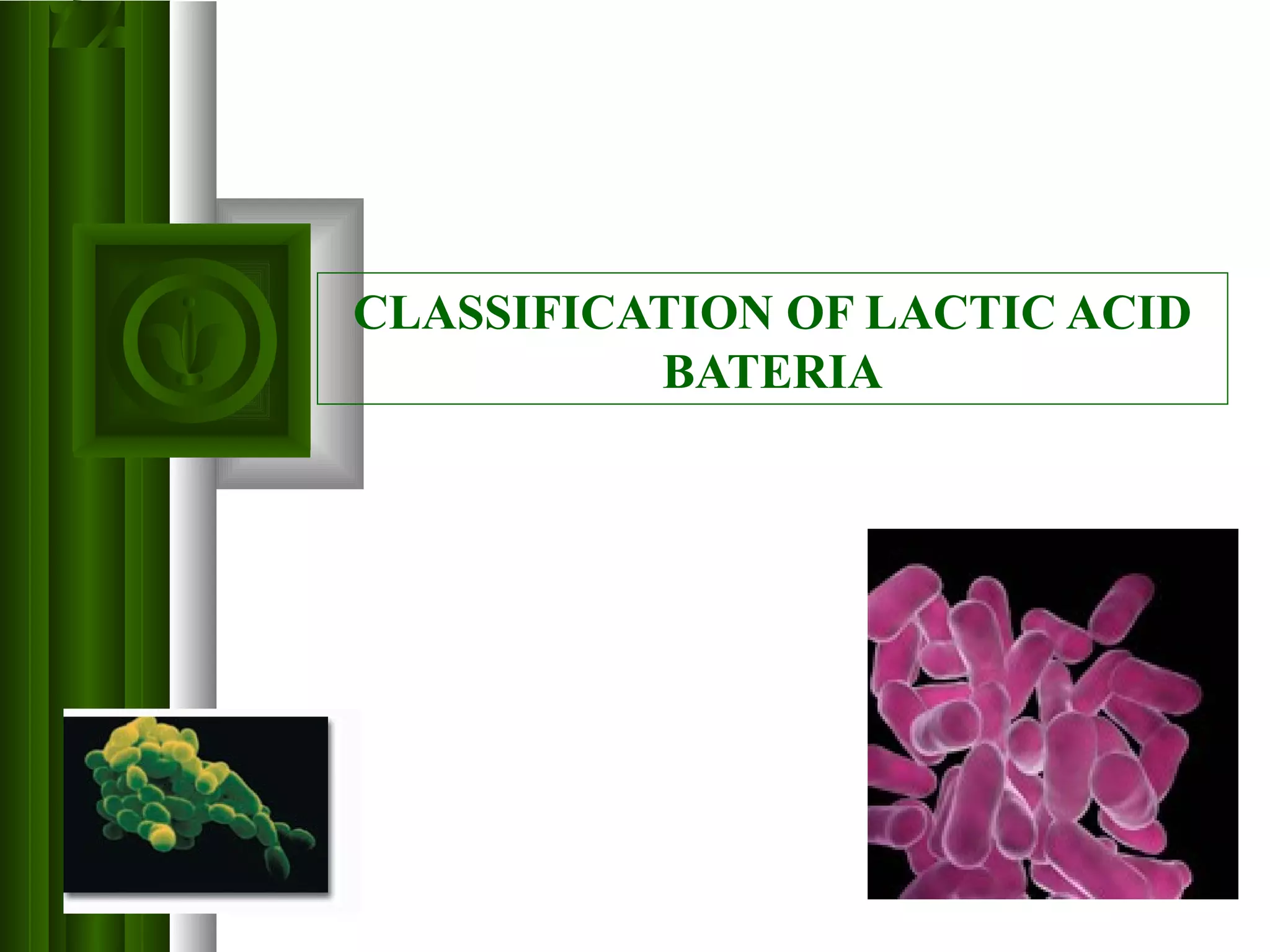




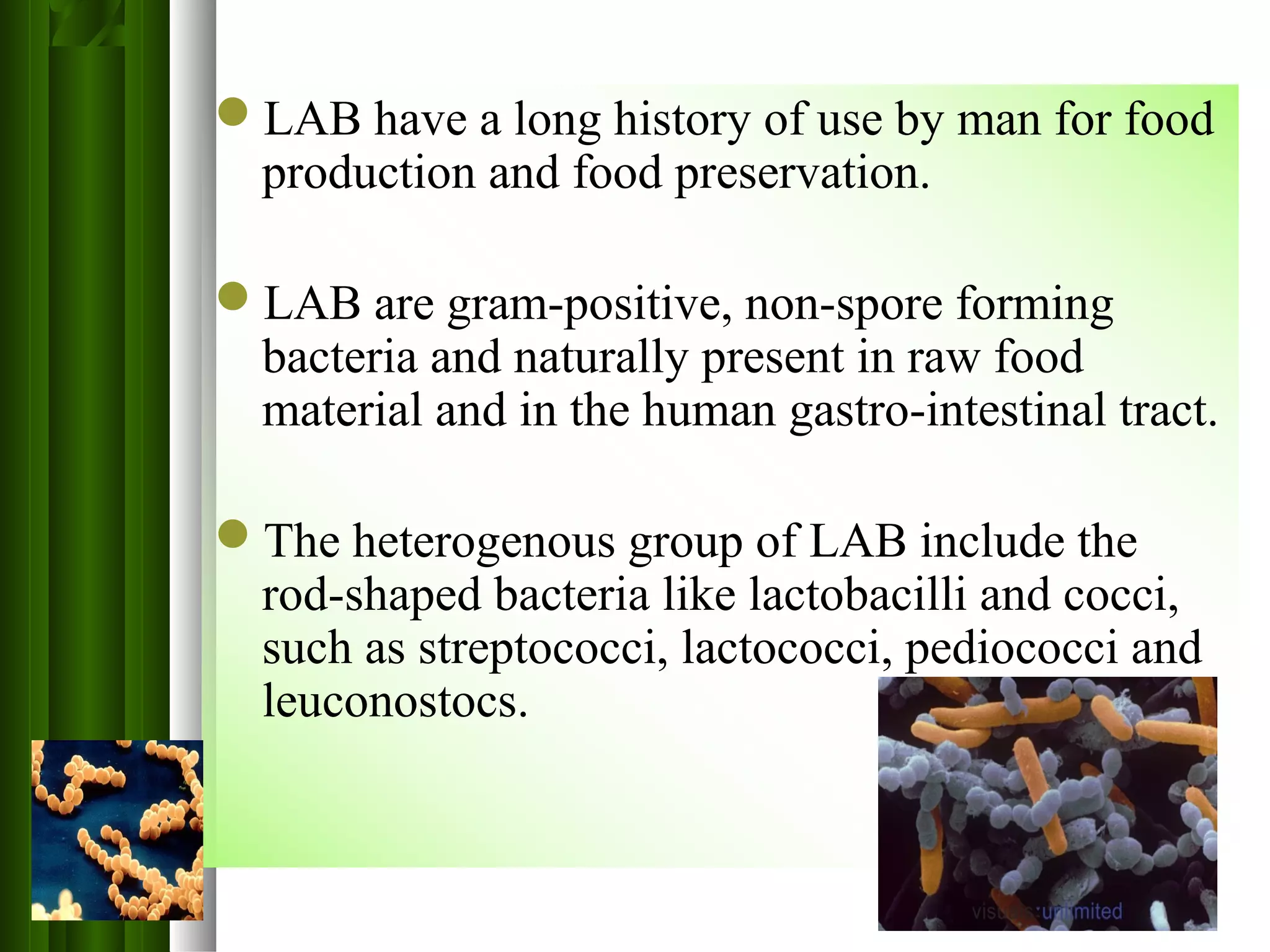
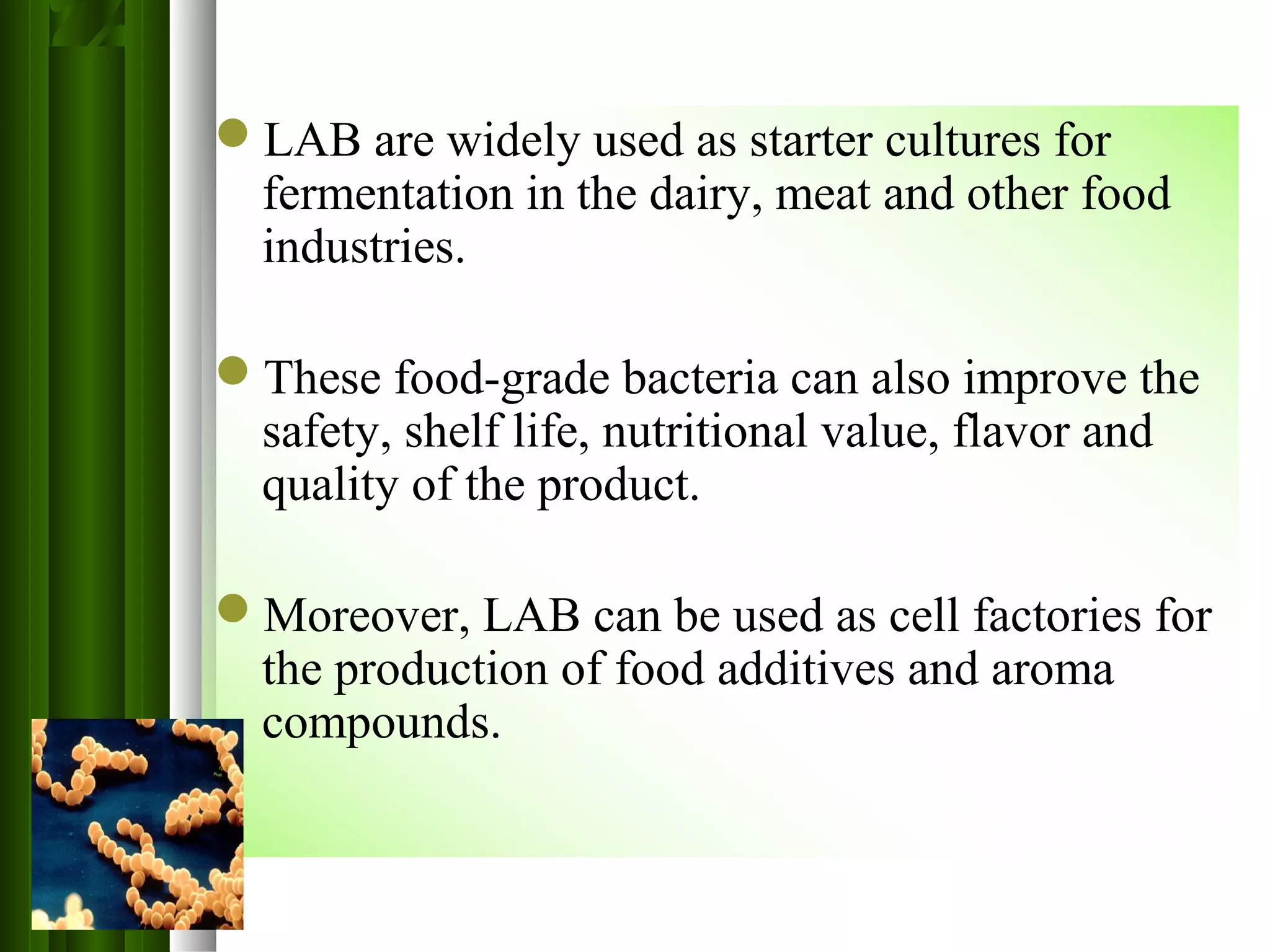








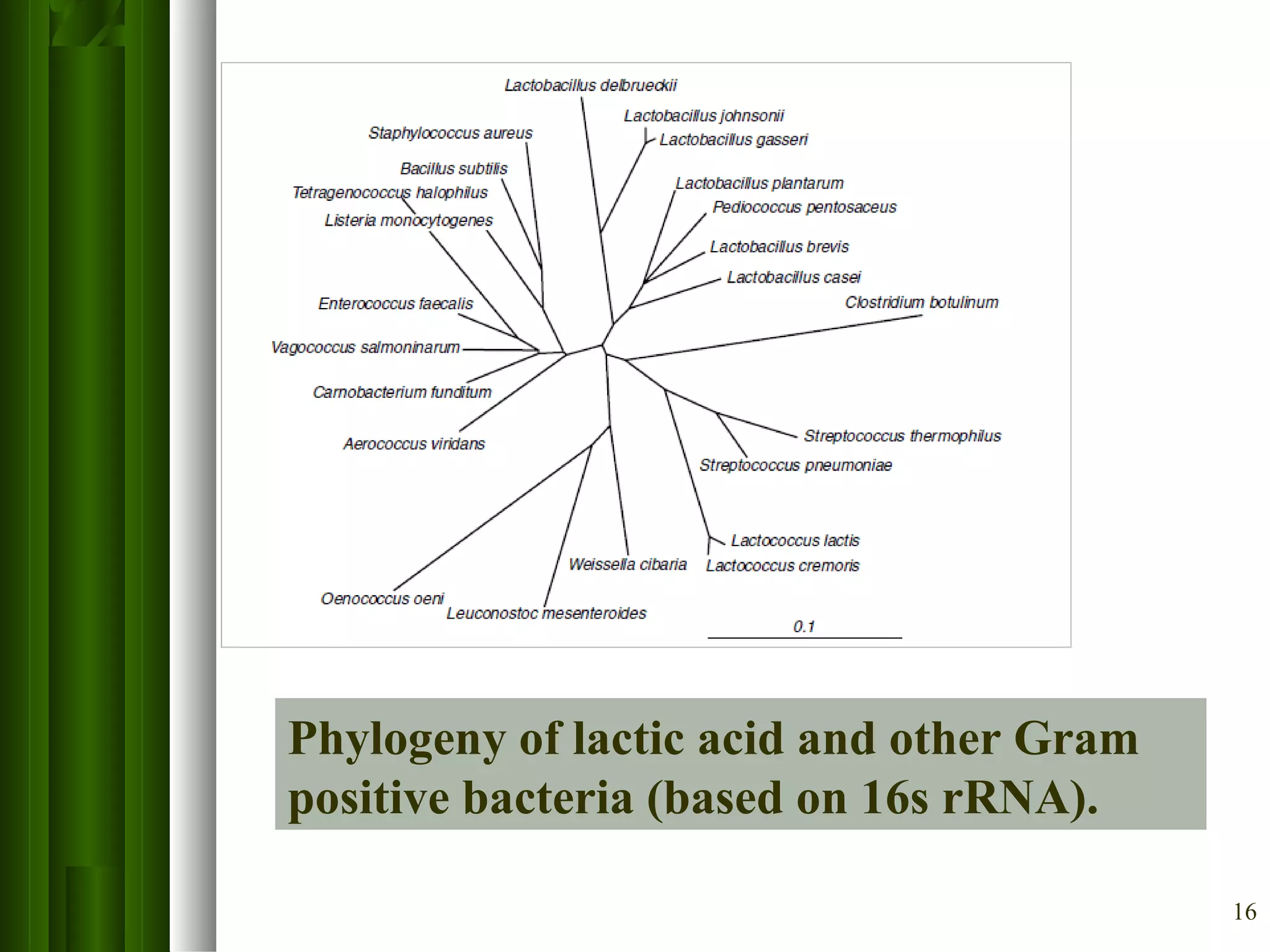

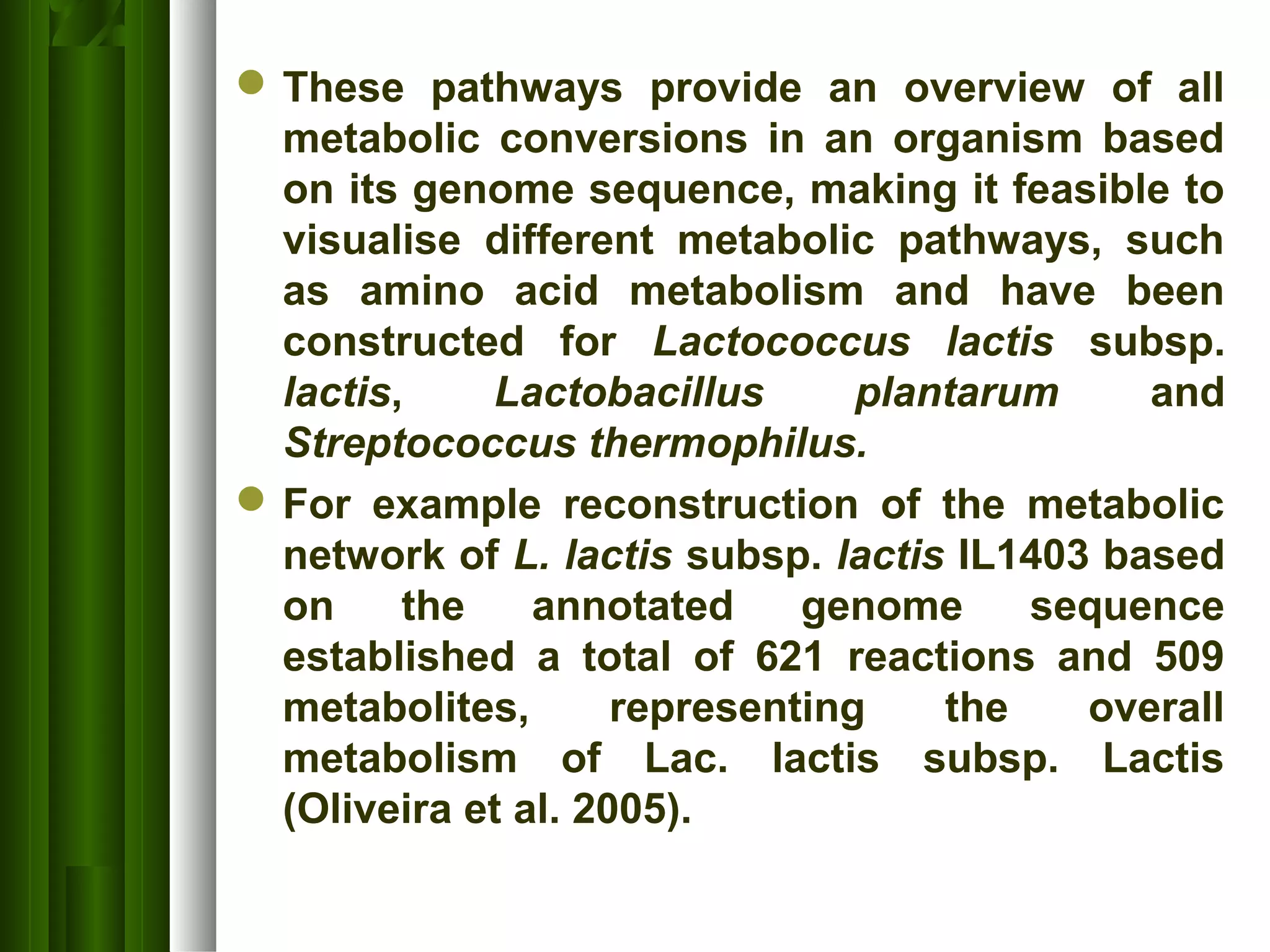
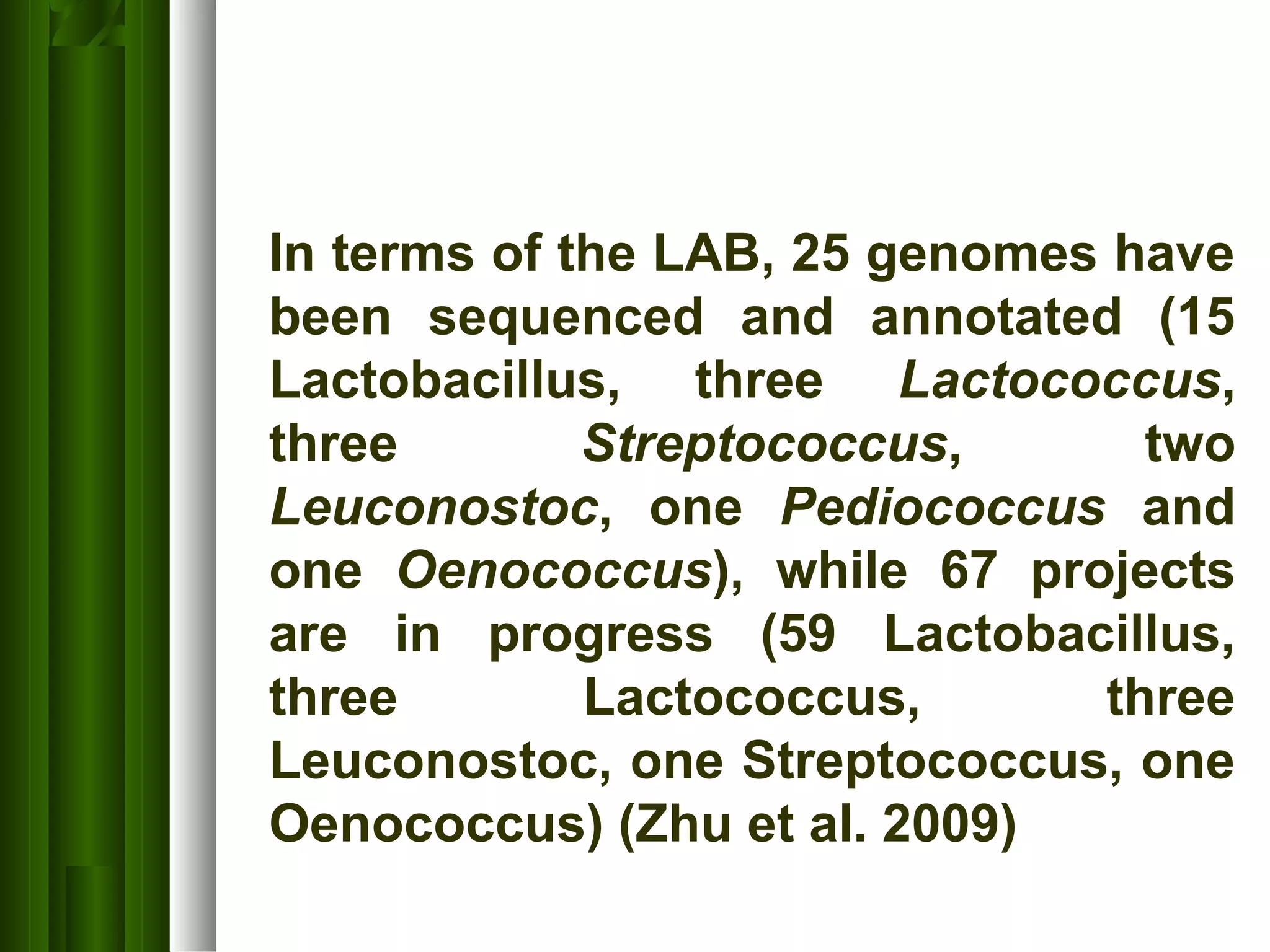

![Lactococcus
L. lactis subsp. lactis (formerly Streptococcus lactis[11]
) is used in
the early stages for the production of many cheeses,
including Brie, Camembert, Cheddar, Colby, Gruyère,Parmesan,
and Roquefort.
Wisconsin, the number one cheese-producing state in theUnited
States, named this bacterium in 2010 as the official state
microbe, the first and only such designation by a state legislature
in the nation
L. lactis strains form one of the main constituents in both
industrial and artisanal starter cultures where their most
important role lies in their ability to produce acid in milk and
to convert milk protein into flavour compounds
L. lactis, is among the most important of all lactic acid
bacteria (and perhaps one of the most important organisms
involved in food fermentations.
L. lactis is the “work horse” of the dairy products industry.](https://image.slidesharecdn.com/classificationoflab11thaugust-190506113444/75/Classification-of-Lactic-acid-bacteria-21-2048.jpg)








